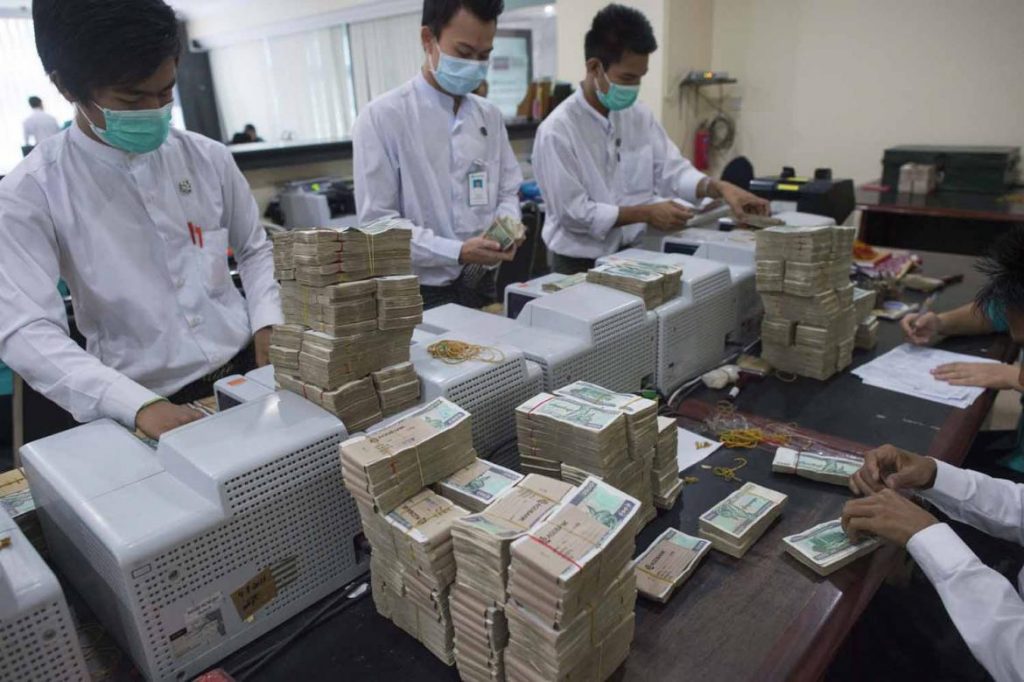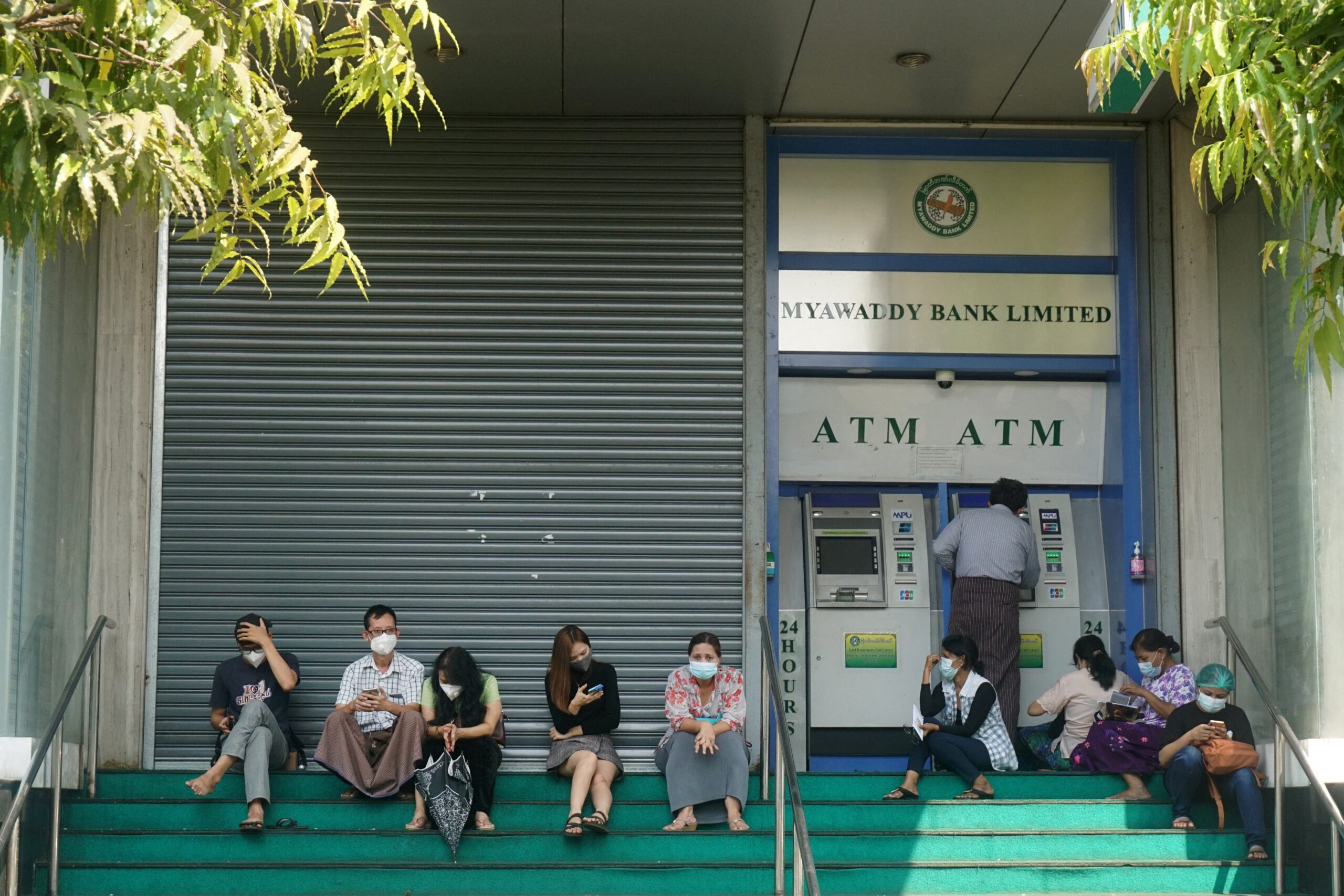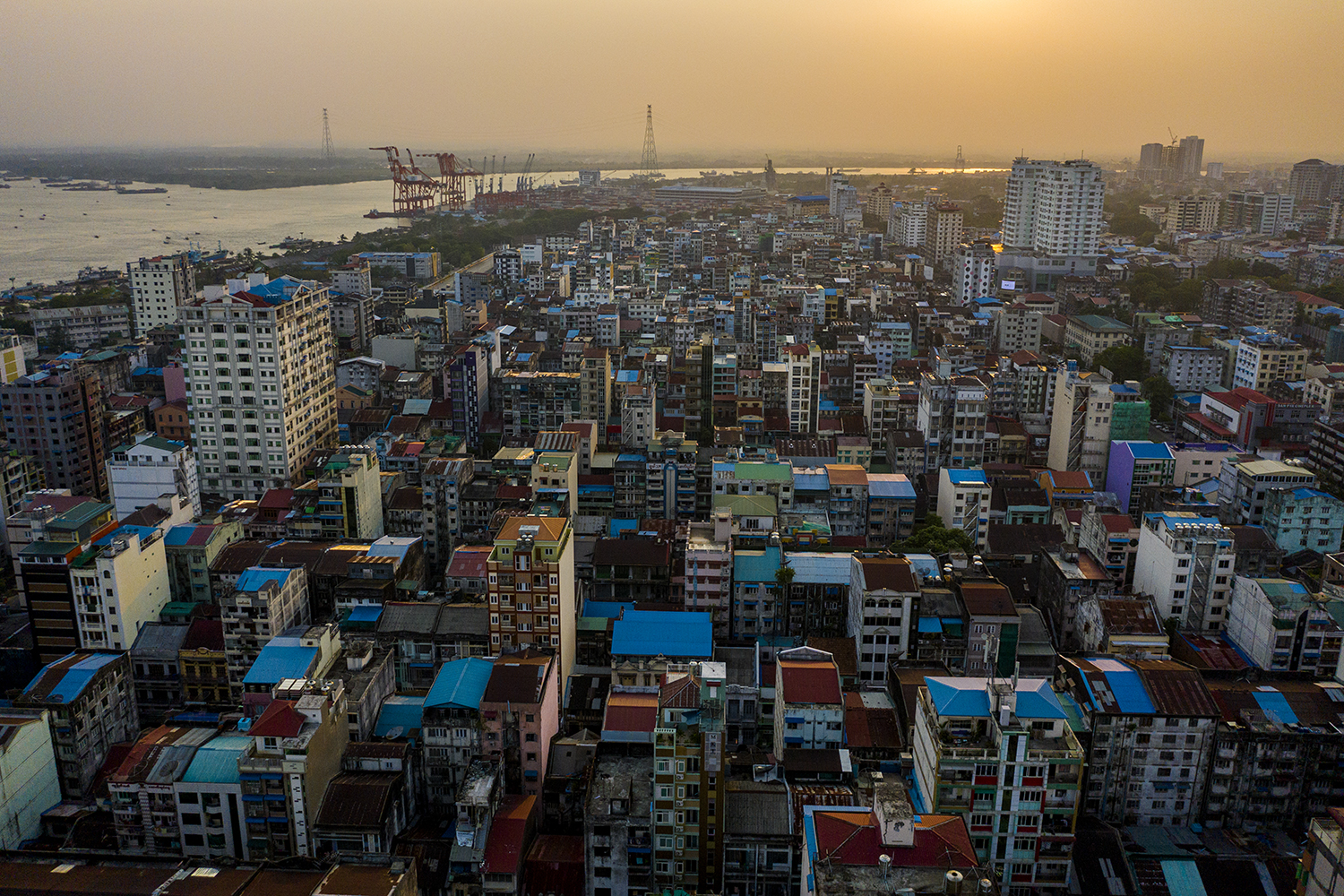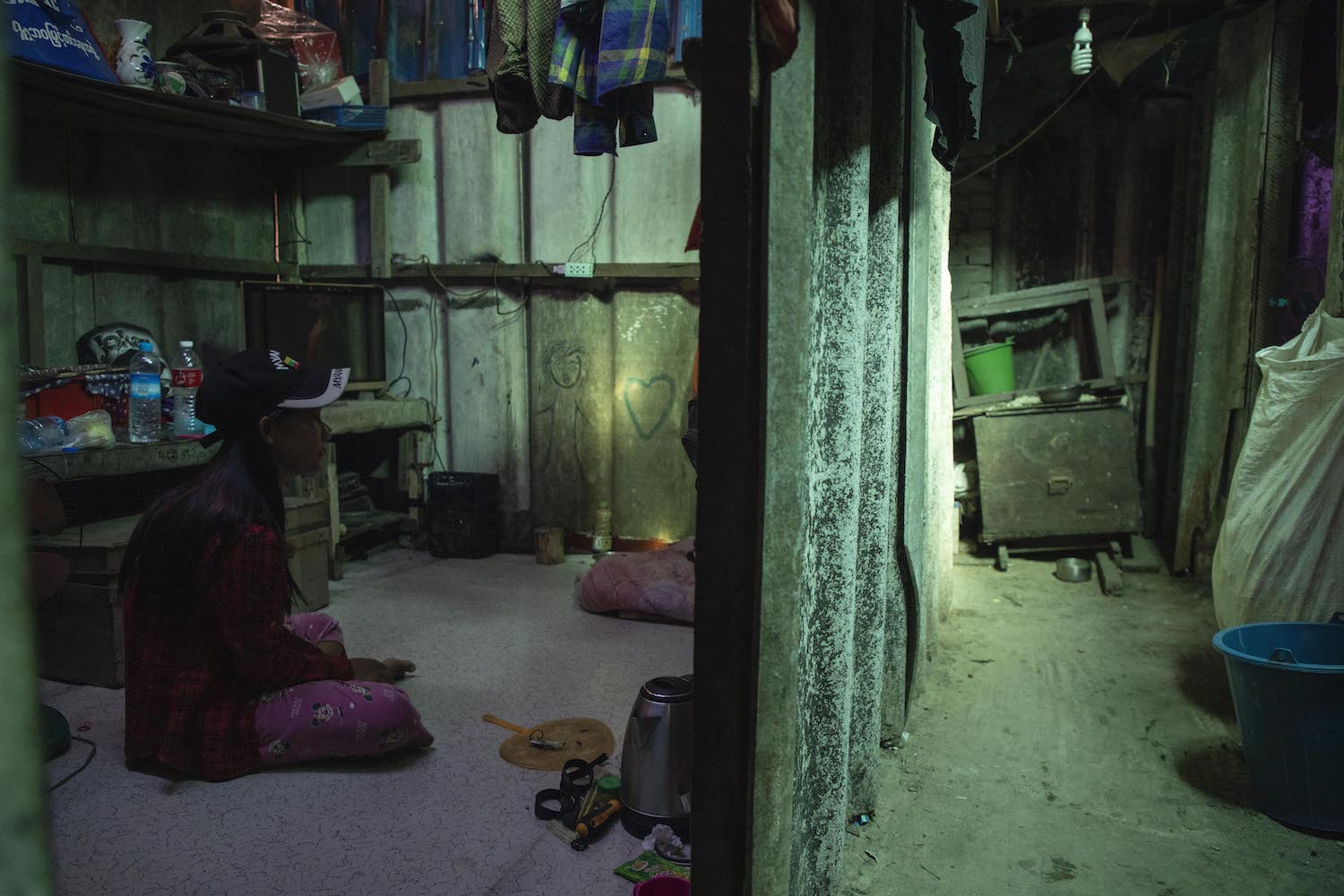Before foreign banks are allowed to offer more services, Myanmar needs to enact reforms that make its domestic banks more competitive and encourage them to extend more credit to the private sector.
By MIN THU MAUNG | FRONTIER
THE DRASTIC depreciation of the Myanmar kyat, declining foreign investment, and the growing budget and current account deficits have prompted many to call for financial reforms. Financial reforms encompass a broad range of aspects but it is always easier to start with one everyone is familiar with: banking reforms.
The primary role of banks is to accept deposits and make loans. Profit comes from the spread between borrowing and lending rates. To judge the efficacy of the banks, then, one would need to ask: Are people’s savings finding their way to the banks? Are the banks lending out these deposits? Finally, are the banks profitable?
As of 2014, only 22.6 percent of people in Myanmar over 15 have accounts at a financial institution (all data is sourced from the World Bank). This is a lot lower than that of Thailand (78 percent) and even Vietnam (31 percent). In terms of financial development, Myanmar has a long way to catch up with Thailand but Vietnam might be a good peer to compare with.
In Myanmar the ratio of bank deposits to GDP stood at 22.5 percent in 2014. This compares to 43 percent in Cambodia and 13 percent in Vietnam. The figure is 109 percent for Thailand. This does not imply savings in Myanmar are low: it could just be that these savings do not end up in the bank vaults.
Support more independent journalism like this. Sign up to be a Frontier member.
How much are the banks lending? Even the small base of deposits that finds its way into Myanmar’s banking system does not get fully used. In 2013, bank credit to bank deposits stood at 76 percent for Vietnam, 94 percent for Cambodia and only 49 percent for Myanmar. Hence, half of all deposits sit idly at the banks.
Taken together, the low deposit ratios and meagre lending underpin Myanmar’s banking issues. This is more serious when lending to private sector is considered. Domestic credit provided by the financial sector in Myanmar comprised 32 percent of GDP in 2015. Out of this, almost half of the credit went to the public sector.
In contrast, Vietnam’ domestic credit provided by the financial sector was 128 percent of GDP, out of which the private sector received 120 percent as a proportion of GDP. This indicates that a disproportionate amount of domestic credit in Myanmar is directed towards the state enterprises. State-owned enterprises crowding out the credit markets is rarely a good sign.
The first step toward reform is to liberalise the interest rates (assuming, of course, clearance and settlement systems and a money market of sorts is already established). Allowing the banks (both formally and informally) to set their own rates would encourage competition. However, the government could still exercise considerable control over interest rates via its monetary policy.
Starting from 1995, Vietnam allowed commercial banks to independently set deposit rates to enhance competition in raising funds. Following the initial financial reform years, competition between banks led to an increase in deposit rates, but lending rates did not rise. This resulted in a significant reduction in the interest rate spread.
Currently, Myanmar banks’ return on assets after tax – a measure of profitability – is a low 0.02 percent. This is surprising given that the interest rate spread is 5 percent, with a lending rate of 13 percent and a short-term borrowing rate of 8 percent. In China and Vietnam, the interest rate spreads are 2.9 percent and 2.4 percent respectively.
This is not to say that the current lending rates should be reduced. Many factors affect interest rates but, all else being equal, competition would bring down the spread between borrowing and lending rates. A credit information system is also urgently needed. Without being able to assess risk and credit worthiness of the borrowers, policy changes would do little to promote lending.
Another observation is that Myanmar banks are willing and able to purchase the government treasury bonds of two-year maturity at the rate of 8.75 percent but the cost of borrowing is 10 percent for deposits with maturities 12 months or longer. In effect, the banks are subsidising the government’s budget deficit.
Liberalising the interest rates would prompt the banks to seek higher yields and compete for good projects to invest in, instead of throwing money into safe but unprofitable investments. It should also be noted that interest rate ceilings generally keep smaller borrowers out of the market since banks find it difficult to lend to them at the prescribed rates. Directed lending towards state enterprises should be limited and loans to small and medium enterprises should be facilitated.
Liberalising interest rates does not imply the government has less responsibility. Rather, it is the opposite. A strong regulatory framework and a better monitoring system are needed to ensure that the banking system remains stable.
Competition for deposits could motivate banks to offer higher rates to savers and make risky loans to achieve higher returns. It would be wise to remember the crisis of 2003 when the banking system came to a halt due to the collapse of a number of informal financial institutions that were offering very high interest rates.
Regarding the entry of foreign banks, Myanmar does not have institutional framework needed to accommodate fully operational overseas banks – for example, those that could offer comprehensive services, including accepting deposits and lending. Neither foreign currency accounts nor deposits by foreign nationals bear any interest.
Vietnamese banks started offering interest payments to foreign currency accounts in 1998. Almost two decades later, overseas banks in Vietnam play only a limited role in wholesale banking. It’s therefore premature to think that foreign banks will quickly enter Myanmar and provide needed credit to domestic firms. Even if entry is allowed, foreign banks tend to favour bigger and more transparent borrowers. At least in the short run, their arrival tends to benefit big corporations.
Until Myanmar can reform its policies so that the country’s small and medium enterprises could receive credit from the domestic banks, allowing fully operational overseas banks would erode the competitiveness of smaller businesses.
However, research also shows that entry of foreign banks can make national banking markets more competitive, thereby forcing domestic banks to operate more efficiently. This is desirable in the long run, but first Myanmar’s domestic banks need to be allowed to compete among themselves.







